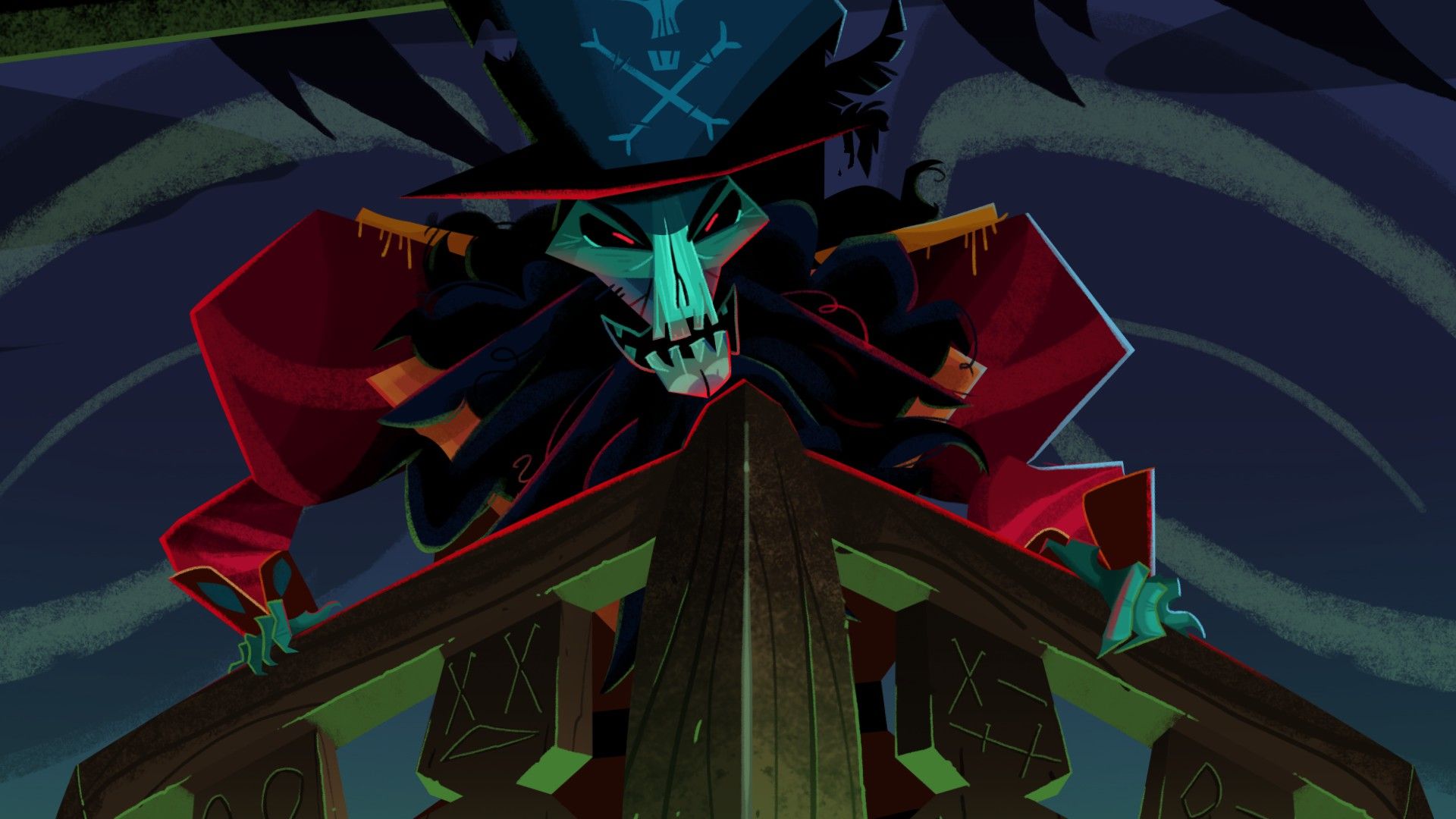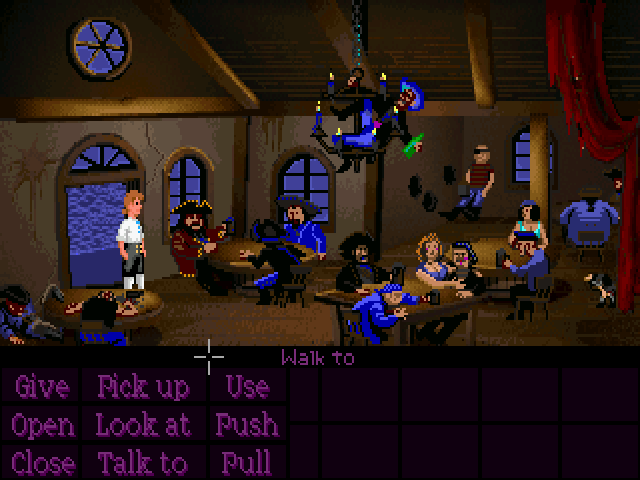Return to Monkey Island is an Adventure for Old and New Fans
How the famous franchise's return is welcoming in all their fans

While researching for my history of Monkey Island piece, I discovered that series creator Ron Gilbert wrote an article in 1989 for the Journal of Computer Game Design called Why Adventure Games Suck. This strikes me as a pretty ballsy move. Gilbert, who was the lead on 1987’s Maniac Mansion, was laying out the flaws in not only his own company’s previous games but went quite hard at what he perceived to be the failures of Sierra, LucasArts’ biggest competition and the number one adventure game developer at the time.
The article itself isn’t quite as provocative as the title suggests - Gilbert writes his 12 rules of thumb as someone who loves adventure games and wants them to be better, and from experience making his own mistakes (he states that Maniac Mansion breaks all but one of his rules). An example of the rules includes ensuring goals and sub-goals are clear, making sure solving puzzles advances the story, and most pointedly, removing cheap player deaths and fail states. Of course, the man who became affectionately known as the Grumpy Gamer didn’t just talk the talk. The year after the article, The Secret of Monkey Island was released and the legacy of that game, and the LucasArts classics that came afterward, proved that Gilbert was emphatically correct.

What I find interesting is that Ron Gilbert’s recent return to the world of point-and-click adventure games somewhat mimics the start of his career. In 2017, Gilbert’s new studio, Terrible Toybox, released Thimbleweed Park after a successful Kickstarter campaign. Thimbleweed Park is a game very much styled after Maniac Mansion, down to its old-school SCUMM engine interface where you select verbs and multiple playable characters. Unfortunately, it was truly old-school, that is to say, dated, in its often frustrating puzzle design. The game might technically stick to Gilbert’s rules, but it felt like a game stuck in the past. Return to Monkey Island feels like the big leap forward in design and accessibility that occurred between Maniac Mansion and The Secret of Monkey Island.

Return to Monkey Island has a rather clever set-up, one that I won’t entirely spoil but I will say that it involves a story told in flashbacks. It also cleverly manages to toe the line between being a direct follow-up to the last game worked on by the original leads (Gilbert, David Grossman, who's also back, and Tim Schafer), Monkey Island 2: LeChuck’s Revenge, and still acknowledging the entries that came afterward.
In Return, Guybrush Threepwood, the mighty pirate, is recounting his journey to find the real secret of Monkey Island. It’s a familiar set-up for a game that’s full of familiar faces and locations. The game begins on Melee Island, which is in the exact same configuration as it was in the original game. It isn’t quite the same thriving pirate haven that it once was, thanks to the new pirate leaders – a trio of black-magic-wielding pirates that rule the rest of the pirate inhabitants with an iron fist. They provide Guybrush’s first obstacle to locating the secret, as he races to beat LeChuck. The writing is as sharp as ever and doesn’t rely on nostalgia to bring the laughs. Still, the whole spate of memorable characters returns in this game in one way or another, including Stan the dodgy salesman, Wally the ever-suffering cartographer, and Murray the demonic talking skull from the post-Gilbert era.

If you are unfamiliar with the world of Monkey Island or haven’t kept up with the series over its stop-start history, this is where Return to Monkey Island’s suite of improvements on the classic point-and-click adventure formula comes in. In the main menu, there is a scrapbook that succinctly summarises the previous five entries in the series. There are some steps taken in Return that make things more accessible for new players, returning players, and players who never quite got the hang of adventure game logic and don’t have much patience for their tough puzzles even though he has played enough of them and played every Monkey Island game in this last month (I’m talking about me, here).

Like in some of the previous games, there are two difficulties – an easier mode with fewer puzzles and a harder mode with more puzzles. I chose the easier mode, and there was one large puzzle that I was point-blank told would have no bearing on the game due to picking the easier difficulty. There is also a book that you are given by the ever-helpful Voodoo Lady that works as an in-game hint system. How it works would be familiar to many who have tussled with adventure games in the past, as it is heavily based on the Universal Hint System, aka my best friend this past month. Instead of just giving you the answers, each section consists of a series of questions and answers. An example might go something like this:
- How do I get a knife?
- What kind of person usually needs a knife?
- A chef. Go into the kitchen, but the chef won’t give you his knife.
- You need to steal it. How could you do this?
- You need a distraction.
And so on until the whole puzzle has been laid out for you. It’s a great way to get help for puzzles while still getting that feeling of satisfaction from solving them – even if you just come in and figure out the last part yourself. I’m really glad that this kind of system has been implemented in Return, and it’s even better than a UHS page because it changes as you progress through the game.

Return to Monkey Island is not just a great game for existing fans of the series, but it’s welcoming to those new to the series or even the whole genre. It’s so heartening to not only see two-thirds of the old team back together (I imagine Tim Schafer was excited but too busy to join in) but thriving and pushing the sometimes stale genre of point-and-click adventures forward. I can only hope that this surprising reunion continues to flourish.